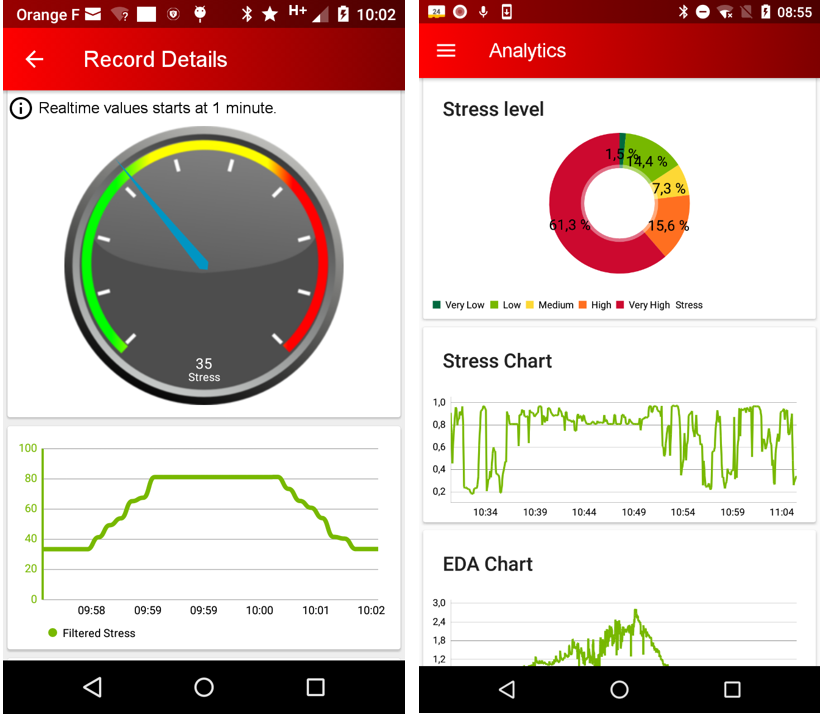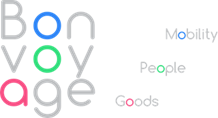The BONVOYAGE smartphone app will provide optimised information for the transport of European passengers and goods. It will ensure the integration of the needs and feelings of people in their door-to-door movement and allow the development of more inclusive mobility solutions in terms of the mode of transport itself, the layout of intermodal locations (station, airports ...) and cities in general. Using different modes of transport will improve the experience of European travellers.
The CEA: dedicated to putting the user at the core
BONVOYAGE automatically determines the most efficient travel solution, and one major benefit of this project is that it ensures the well-being of the traveller.
“To put the user at the core, the CEA has developed intelligent implicit feedback functions, i.e. models based on machine learning,” explains Étienne Labyt, head of the project at the CEA-Leti1. “This allows both an automatic recognition of the transport modes just using the - usually - low cost sensors available in the user’s smartphones and a monitoring of the traveller’s stress level by using connected devices like a watch or wristband, which are available on the market.”
This helps to build a user profile based on the traveller’s habits (e.g. User A never rides a bike, User B never goes on a plane, etc.). Moreover, the stress monitoring assesses the traveller's feelings regarding the different transport modes, in order to improve their user profile and optimise their experience (e.g. avoiding suggesting a flight option if it particularly stresses the traveller).
During the trip, the application will help the traveller if an unexpected event occurs during the suggested travel plan. Additionally, if a trip is not available at the requested time, the system notifies the user should it become available later on.
In addition to the implicit feedback, the BONVOYAGE app also enables the user to provide explicit feedback, such as information on traffic, weather events, accidents, and so on.

Screens from the app showing the live stress level of the traveller (left) and a summary of the traveller’s stress levels during a defined time (right). © CEA
1 Leti, a technology research institute of the CEA, pioneers micro and nanotechnologies, tailoring differentiating applicative solutions that ensure competitiveness in a wide range of markets. It coordinated a work package of the BONVOYAGE project.
Developing better travel
The highly heterogeneous, distributed and mobile nature of data, coming from data-centres, sensors, vehicles, goods and people on the move, calls for an innovative networking paradigm. Current networks limit themselves to “just” providing communication channels between hosts. BONVOYAGE developed ‘Internames’ to allow communications among entities identified by names, without the constraint of a static binding to a particular location.
Concretely, the platform manages the request of a “user” (a person, a parcel or goods) to travel from its source to its destination, utilising several tools:
- Collecting and elaborating data related to the request and generating a corresponding context;
- Creating a personalised user profile conveying requirements, including quality of experience parameters and special requirements;
- Developing personalised travel instructions, optimal for the context and user profile;
- Triggering the necessary services;
- Exploiting platform data to define multi-part tariff schemes.
BONVOYAGE for Europe
The EU targets achieving a European transport system that is resource-efficient, climate- and environmentally-friendly, safe and seamless for the benefit of all citizens, the economy and society. BONVOYAGE is part of this European ambition to reconcile the growing mobility needs of its citizens and goods and the changing needs. Moreover, BONVOYAGE helps implementing the Directive 2010/40/EU regulation about EU-Wide multimodal travel information services.
Benefits for transport systems
For the transportation of goods, BONVOYAGE enables better logistics that ultimately improve inventory management with just-in-time delivery, something that supply chains critically depend on. The ability to build demand/response systems that are responsive to the requests of user groups leads to better utilisation of transport units, and therefore reducing costs. Access to more up-to-date system and environmental information allows dynamic re-routing and a more efficient use of resources for a sector that relies on SMEs.
Proofed and tested
BONVOYAGE demonstrated the platform and communication network in integrated, large-scale, real-life application scenarios, incorporated into the normal business operations of the transport operator partners. Thus, BONVOYAGE was successfully tested between Grenoble (France) and Bilbao (Spain) and between Grenoble (France) and Oslo (Norway). During these experiences, the developed models for automatic recognition of transport modes and the monitoring of user’s stress level were tested. The traveller wore an Empatica wristband and his smartphone, with the Mobility Observer and Stress Observer apps. The traveller’s movements and physiological signals were continuously recorded and processed in real time to achieve a continuous evaluation of his stress level and use of transport modes.
About BONVOYAGE

Running from May 2015 to April 2018, BONVOYAGE brought together, under the coordination of CNIT, 11 different partners from 5 European countries. Granted with €4M from the EU, the project designed, developed and tested a platform optimising the multimodal door-to-door transport of passengers and goods. The ongoing European project GateOne is building on BONVOYAGE’s results.